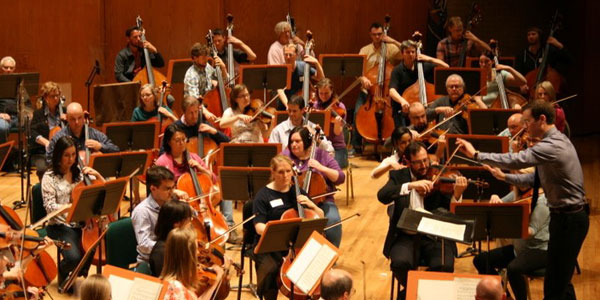Emmanuel Pahud Performs Mozart’s Magic Flute Fantasy: A Night of History and Performance

(Courtesy of the Utah Symphony)
February 8, 2023
On Feb. 3 and Feb. 4, the Utah Symphony played with Emmanuel Pahud, the principal flute of the Berlin Philharmonic, at Maurice Abravanel Hall. They performed a collection of beloved classics, like the titular magic flute fantasy by Mozart, and more lively instrumentation from Carl Nielsen’s flute concerto. As a not-your-average listener of classical music, the history behind everything classical can be a bit overwhelming. However, once you’re in the crowd and the musicians play their first notes, the enjoyment of listening to a symphony is universal.
In the hands of conductor and music director Thierry Fischer and with an impressive performance from Pahud, the passion of the artists oozed from the stage.
Classical History
The history of classical pieces isn’t essential to enjoying them. However, knowing more about what the composer was experiencing at the time deepened my enjoyment of each piece. The two sets that Pahud played lead flute for were an excerpt from Wolfgang Amadeus Mozart’s “The Magic Flute” and Nielsen’s “Concerto for Flute and Orchestra.”
Mozart’s “The Magic Flute,” probably one of his most famous pieces, was written in tandem with a few other pieces during Mozart’s last year alive. This is a notably prolific year of Mozart’s life, and “The Magic Flute” was the last thing Mozart ever composed. The story of the opera follows a wild lover named Prince Tamino trying to save Princess Pamina, with his magical flute, from the evil Sarastro. Although this is a drastic oversimplification of the plot, “The Magic Flute” is known for being one of the strangest operas ever made. The opera was made by a young genius in his prime when he was suddenly killed by an unknown illness.
Nielsen’s “Concerto for Flute and Orchestra” also came late in his life. After the popularity of his wind quintet, Nielsen decided he was going to create a piece for each of the instruments in the quintet. Only two of the instruments got their own pieces, but one of those instruments was the flute. While Mozart was always quite prideful of his work, Nielsen was known for being a deep critic of his own work. In fact, after this piece was released to almost universal acclaim, he believed it still wasn’t ready. However, hearing this piece live truly feels larger than just one man.
The Performance
Since this was the first symphony that I can remember, I didn’t know what to expect stepping into Abravanel Hall. However, as the music started to play, the violins’ beautiful coordination swept me away. The music allowed me to create a story of my own in my head, where I got to fill in the words while the music provided the emotions. Not only that, but watching all of the artists slowly get swept away in their performance was also incredible to see. Pahud and the Utah Symphony truly have a dedication to musicianship I’ve never seen in a live performance before.
I’ll be on the lookout for Emmanuel Pahud and the Utah Symphony’s next performances, both separately and together.







